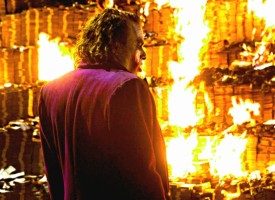On the heels of another chaotic trading week in major markets, today one of the top economists in the world sent King World News an incredibly powerful piece warning about the most dangerous bubble in history and why the central banks are now in a panic. Below is the fantastic piece from Michael Pento.
KWN will be releasing interviews all day today with Eric Sprott and many others, but first…
By Michael Pento of Pento Portfolio Strategies
July 24 – (King World News) – One of the most ironic and fascinating characteristics about an asset bubble is that central banks claim they can’t recognize one until after it bursts. And Wall Street apologists tend to ignore the manifestation of bubbles because the profit stream is just too difficult to surrender.
The excuses for piling money into a particular asset class and sending prices several standard deviations above normal are made to seem rational at the time: Housing prices have never gone down on a national basis and people have to live somewhere, the internet will replace all brick and mortar stores, and perhaps the classic example is that variegated tulips are so rare they should be treated like gold….
Continue reading the Michael Pento piece below…
Advertisement
To hear which company investors & institutions around the globe are flocking to
that has one of the best gold & silver purchase & storage platforms
in the world click on the logo:

I am willing to let the Dutch off the hook; back in the seventeenth century asset bubbles were virtually nonexistent because money was still in specie. But central banks have created the perfect petri dish for asset bubbles over the past three decades. Therefore, it’s imperative for investors to understand the classic warning signs of a bubble so you can avoid the inevitable carnage in the wake of its collapse.
As I identified in my book “The Coming Bond Market Collapse”, there are three classic metrics to determine when an asset has grown into a bubble: it becomes extremely over supplied, over owned and overpriced compared to historical norms.
The real estate market circa 2005 was a great example of a classic bubble. The supply of new homes boomed as new home construction rates peaked around 2 million units per annum in the middle of the last decade. That’s about 400k units higher than what would be considered the historical average.
Just prior to the start of the Great Recession the level of home ownership in the U.S. soared. This rate hit a high of 69% during 2005, after bouncing around 64-66% for decades. Today’s home ownership rate has fallen back to just 63.7%, which is the lowest in 25 years.
And finally, during the real estate bubble homes were massively overpriced. According to Trulia, at its 2006 peak home prices were 39% overvalued based on consumer incomes and cost to rent. On a national level the median home price to income ratio shot to 4.7 in 2006, compared to the 2.6 historical average. The current home price to income ratio has climbed back to 4.4 on a national basis. However, even though home prices are currently vastly overvalued, the housing market is not in a classic bubble because the real estate market is not currently in the conditions of being over owned or over supplied.
But the bond bubble is a classic bubble thanks to Wall Street and the Federal Reserve. The bond market qualifies as being in a state of over supply because there has been an additional $60 trillion in total global debt that has accrued since 2007.
During the first half of this year, $891 billion in bonds were issued in the U.S. alone. That’s up 7.5% from the same period in 2014, which was itself a record year, according to the Securities Industry and Financial Markets Association.
Higher-yielding “Junk Bonds” led the way with $185 billion so far in 2015. Volume for June topped out at $29 billion from 60 issuers, the most for any June on record. The previous June saw just $12.8 billion in volume from 31 issuers. June also follows the two busiest months of this year, with April and May pulling in $39 billion and $37 billion, respectively. That makes for a record quarter of $105 billion, the largest recorded quarterly volume ever. Talk about being oversupplied!
But just as more risk was taken toward the final stages of the housing bubble in the form of sub-prime mortgage issuance, for every speculative-grade company that has had its credit rating upgraded this year about two others have been downgraded. This is the worst ratio since 2009. U.S. companies that issue high-yield debt posted two consecutive quarters without earnings growth for the first time since the financial crisis. And their average level of debt-to-earnings is at an all-time high as well.
Next, bonds are over owned because investors are yield-starved. In the first quarter of this year alone, net cash inflows into bond funds totaled $102 billion — that’s the largest inflow since 2001. And last year investors poured $204 billion into bond funds, surpassing inflows of $121 billion into stock funds.
And finally, bonds are overpriced compared to historical norms. Bond yields and prices are inverted; as bond prices fall, yields rise. Today, the yield on the bench mark US 10-year Treasury sits at around 2.3%. This is very close to its historic low and far below the 7% average over the last 40 years — making the price of bonds massively expensive at the current level—especially in light of record debt levels and the increase in central bank balance sheets.
I first explained the classic signs of a bubble at the start of the real estate crisis to help investors identify a problem before it grows too far out of control. Perhaps the Fed should now take heed and ask the question if seven years of zero percent interest rates could possibly lead to a bubble in fixed income. But even more importantly, the question everyone should be asking is: what happens when bond prices crash and who is going to buy all that debt?
Once the Fed starts raising interest rates investors may start to sell their high-yield junk bonds in the same manner as sub-prime mortgages were the first to crack in the housing bubble in 2008. This would exacerbate the drop in prices and cause yields to rise yet further and faster.
Prices will also tumble because government regulations have stripped banks of their proprietary trading desks; and bids for plummeting bond prices may become as rare as a variegated tulip. Spiking debt service payments will crumble the stock and real estate markets that have been built on synthetic, free-money based economies.
The Most Dangerous Bubble In History And Why The Central Banks Are In A Panic
The bottom line is that the bond market is the most dangerous bubble in history precisely because every asset class derives its value from the cost of money. Therefore, even though stocks and real estate aren’t in a classic bubble they have still become vastly overvalued due to the frantic search for yield over the course of seven years.
When, not if, this classic bond bubble bursts central banks will be the only buyers left in the market. And this bid from central bankers will have to be massive, protracted and unprecedented in nature. The resulting market chaos should be vastly more baneful than the Great Recession of 2008. ***KWN will be releasing interviews all day today with Eric Sprott and many others.
ALSO JUST RELEASED: The Ticking Time Bomb, Gold And A World On The Edge Of Collapse CLICK HERE.
© 2015 by King World News®. All Rights Reserved. This material may not be published, broadcast, rewritten, or redistributed. However, linking directly to the articles is permitted and encouraged.
If you are interested in purchasing physical gold and silver for delivery you can call Steve Quayle or his staff at (406)586-4842, or you can email them at tyler@safetrek.com or info@sqmetals.com
The audio interviews with John Mauldin, Stephen Leeb, Egon von Greyerz, Nomi Prins, Gerald Celente, Andrew Maguire, Michael Pento, Dr. Paul Craig Roberts, Rick Rule, Bill Fleckenstein, Eric Sprott, Robert Arnott, David Stockman, Chris Powell, Dr. Philippa Malmgren, Marc Faber, Felix Zulauf and Rick Santelli are available now and you can listen to them by CLICKING HERE.








